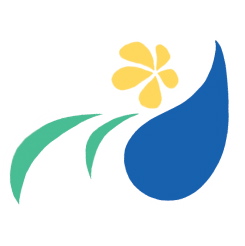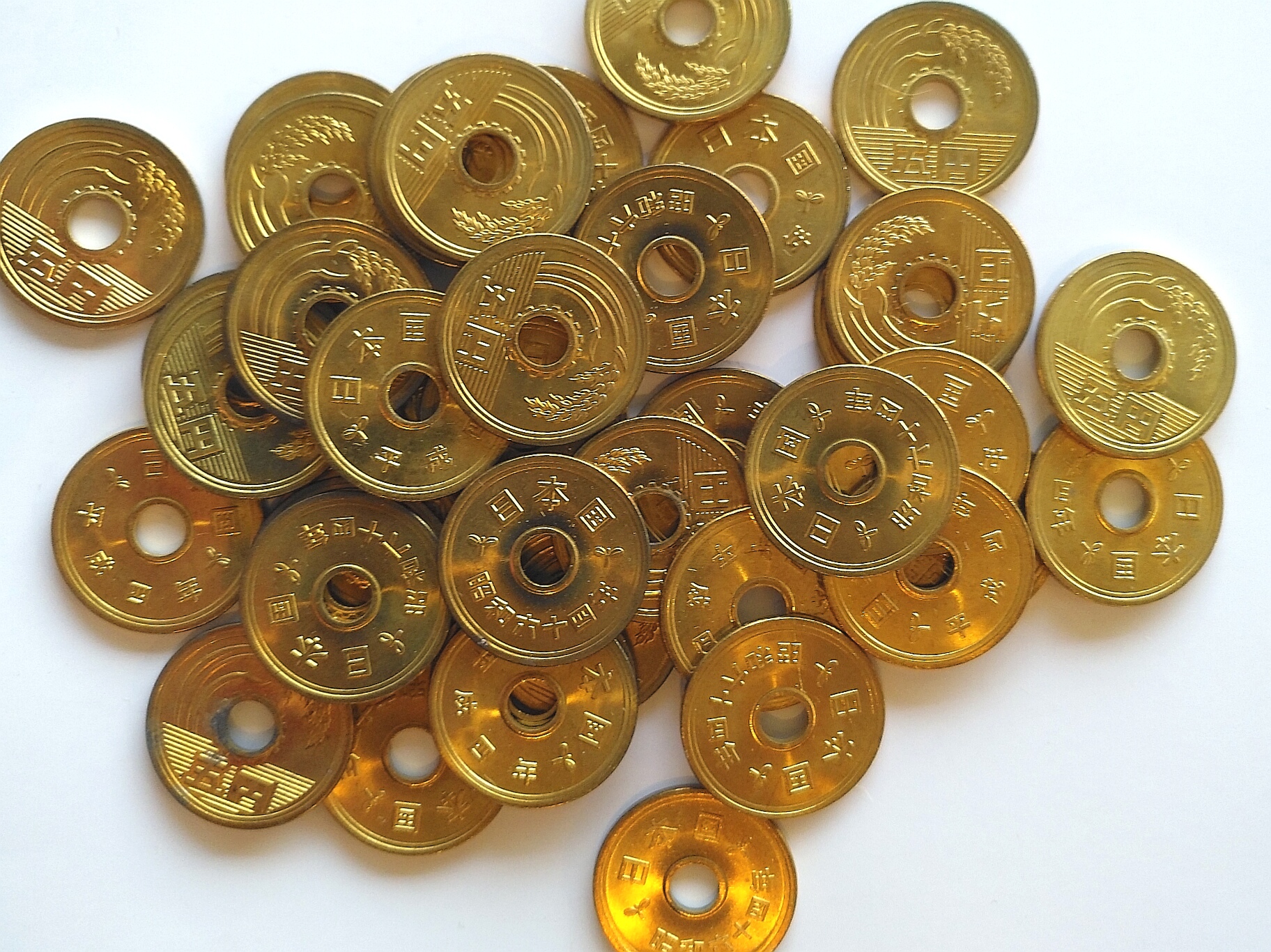Original Japanese calligraphy by Yukari Haverstock. It's the Japanese translation of an excerpt from William Blake's "Auguries Of Innocence".
To see a World in a Grain of Sand
And a Heaven in a Wild Flower
Hold Infinity in the palm of your hand
And Eternity in an hour.
ひとつぶの砂に ひとつの世界を見
一輪の野の花に ひとつの天国を見
手のひらに無限を乗せ
ひと時のうちに永遠を感じる。
Ikebana Lessons Cancel Policy Change
This announcement is for our ikebana students.
We are tweaking our lesson cancellation policy a little (effective Feb 23, 2018).
Old Cancellation Policy:
- Up to 1 day before lesson date: No charge.
- Same-day or no-show: Full charge (1 lesson)
New Cancellation Policy:
- Up to 2 days before lesson date: No charge.
- 1 day before lesson date: $20 +HST.
- Same-day or no-show: Full charge (1 lesson)
Extra Colour: The Planning Behind The Lessons
The ikebana lessons are individualized. Each lesson is planned specifically with each student's rank and skill level in mind. Flowers and branches are carefully chosen so that they are appropriate for each student's lesson theme. The flowers/branches are ordered (usually 4-5 days in advance).
Sometimes, we do have a wait-list. It might be natural to assume that if one cancels, then another person can take the spot. That works out sometimes but more often than not, it's not as straightforward as we would like to think. If the student level is different, then the pre-ordered flowers would not be appropriate. New planning and adjustments need to be made. Usually it's a last-minute scramble around town, scouring florists for suitable flowers!
Of course, there is usually an important reason for a cancellation. We understand this. Unavoidable circumstances happen to us too. And that's OK! But if you do know that you need to cancel, the sooner you let us know, the better it is for us to adjust!
Thank you very much for your understanding and continued support.
Happy New Year 2018!
Akemashite omedetou gozaimasu! 明けましておめでとうございます!
Let's welcome the Year of the Dog with an eager bow-wow! (or "wan-wan" as the Japanese would say!) May Lady Luck smile upon you in 2018!
My Ikebana: Relief In Blue
When I have bits of leftover plant material, I dry them and keep for future use. This time I have dried china berries and palm leaves. I thought I'd use them for some relief work.
As well, I picked up some tree bark and branches off the street! I painted the dried berries blue and found some blue card stock that would further draw out the colour.
Here is the whole arrangement.
I hope you like it. --Miyako
My Ikebana: Kitchen Sink Flowers
One of the new themes in Sogetsu Textbook 5 is called "Using Various Locations" (場を探す)which challenges us to seek out non-traditional locations to place an ikebana arrangement.
Above the kitchen sink in our little studio, there is a small ledge where we'd normally put tea canisters, dishwashing detergent, etc. This would be a great place to provide a little enjoyment to the person opening the cupboards! (Of course, care was taken so that the flowers will not impede the cupboard doors.)
Here is the whole arrangement.
I hope you like it. --Miyako
2017 Year-End Store Hours
Destiny And The 5-Yen Coin
Most Japanese people believe in destiny. The term "go-en" (ご縁) refers to those seemingly serendipitous encounters that result in long and meaningful relationships. It would often mean a bond between people but it could also refer to connections with objects (like a house, a painting, or even a favourite teacup!) or a calling. Ask people how their career started, how they met their partners or how they found that perfect piece of furniture. Most answers would probably boil down to a mixture of perseverance and luck. Japanese people would say "Go-en ga arimashita." (ご縁がありました。)There was "go-en" involved in the outcome. It was meant to be!
The Japanese 5-yen coin is also called “go-en” 五円. Because it sounds the same as the “go-en” of destiny, many Japanese people believe that having a 5-yen coin around helps them find what the Universe has in store for them. It could be a soul-mate, a dream job, the perfect house, etc. In shrines and temples, it is also the coin of choice when tossing a token offering into the collection box (賽銭箱 saisen-bako) whilst saying a prayer of thanks and/or a wish for something in the future (in that order). The 5-yen coin helps along the good luck and the serendipity that is actually meant to be!
Extra trivia: Using a 10-yen coin for your prayers and wishes is not advisable. Another word for "10" is "toh" (十). So, the 10-yen coin could be called "toh-en" (十円). Now, another meaning for the word "toh" (遠) is "far" ...and putting them together as "toh-en", it can be written as "遠縁", which means "far destiny"! So the 10-yen coin is something that keeps your destiny out-of-reach!
We made a few items to help keep your lucky 5-yen coin handy, always ready to to attract the good luck in! All hand-made in-house with loving care. Available at the shop while supply lasts.
An origami pouch to keep your 5-yen coin in your wallet or purse.
A crane ornament to display in your home or office.
My Ikebana: Climbing Up To Sengai
From Sogetsu Textbook 5, this arrangement is on the theme of yuka agari (床上がり) Floor Position Arrangement. The arrangement originates from the floor and is created while being conscious that it will be viewed from a standing eye-level.
The painting on the wall is a replica of "The Willow" by Sengai Gibon (1750-1837), a Zen monk.
I hope you like it. --Miyako
Ikebana Lessons Fee Change
This announcement is for our ikebana students.
Sadly, the time has come to announce an increase in our ikebana lesson fees. This is the first time that lesson fees are being raised since Miyako started teaching in 2008. Even as flower prices kept going up through the years, we were able to keep the fees unchanged with the help of the economy of scale afforded by more students coming to learn...that is up till now.
New Ikebana Lesson Fees effective from January 1, 2018.
Single Lesson 50.00 +HST
3-Lesson Set: 125.00 +HST
Lessons that have already been paid for will be honoured with no additional fee.
Thank you very much for your understanding and continued support.
My Ikebana: Welcoming Autumn
Here in Canada, autumn is a time of leaves changing colours. It is also the time of harvest and we see a lot apples, pumpkins and gourds.
To welcome autumn, I used the fruits of harvest in an ikebana arrangement. Unlike flowers, they are heavier and have dense, compact shapes. It was a bit of a challenge to incorporate them in an arrangement!
In case you are wondering, I used the thick metal hanadome to hold up the heavy fruit!
Here is the whole arrangement..
I hope you like it. --Miyako






